

The lateral surface area is sum of the areas of the rectangular shaped sides of the prism or the areas of the triangles of the pyramid. It does NOT include the area of the bases.
Answer the following questions. Click on the blank space to check your answers.


The formula for lateral surface area of a rectangular prism will be the total surface area formula without the areas of the bases.
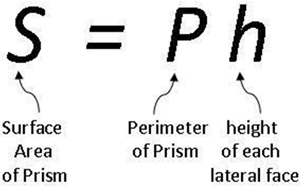
Example: Given the rectangular prism below, find the lateral surface area.
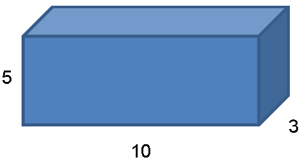
 .
.

The formula for lateral surface area of a pyramid will be the total surface area formula without the area of the base or
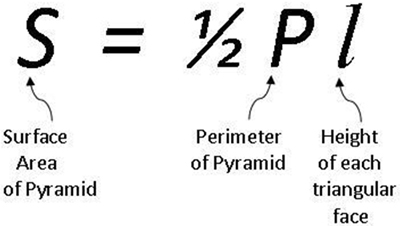
 base.
base.
 is the sum of the areas of the triangular lateral faces, without the area of the base.
is the sum of the areas of the triangular lateral faces, without the area of the base. 
Example: Given the pyramid below find the lateral area.
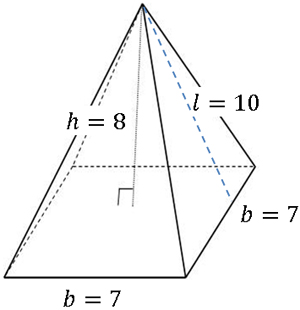
 .
. .
.
You may also encounter problems that ask you to find the surface area of only certain faces of a prism or pyramid-like object. Due to practical limitations, such as hidden faces or holes in the object, you may have to use formulas, then get a little creative.
For example: An obelisk is a 3-dimensional object with a square base, lateral faces that are trapezoids, and a crown that is a square pyramid. A famous obelisk is the Washington Monument, in Washington, DC.
|
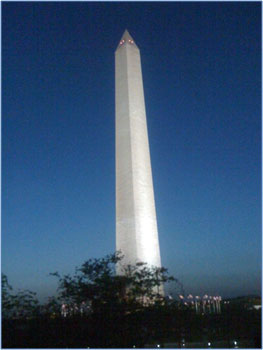 |
Given these dimensions, what is the total surface area of all 8 exposed faces of the Washington Monument?
Answer the following questions. Click on the blank space to check your answers.
Step 1: Determine the total area of the lateral faces of the trapezoidal portion of the bottom of the obelisk.



Step 2: Determine the lateral surface area of the pyramid on top of the obelisk.



Use the Pythagorean Theorem to determine the slant height of the pyramid.

Step 3: Combine the areas of the two portions of the obelisk.